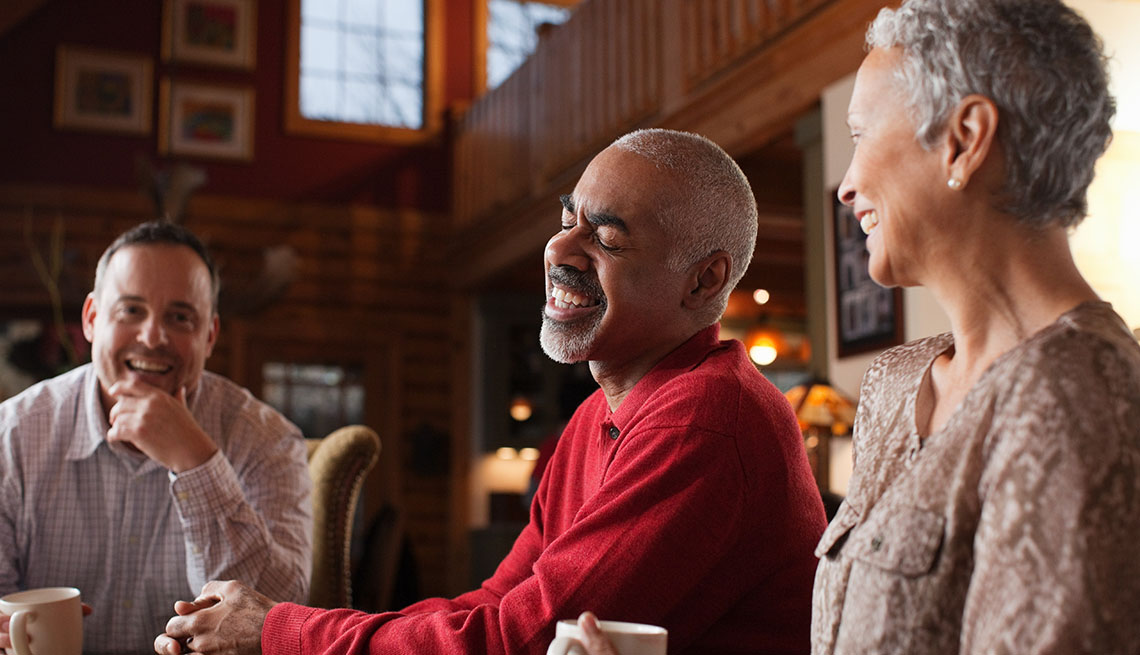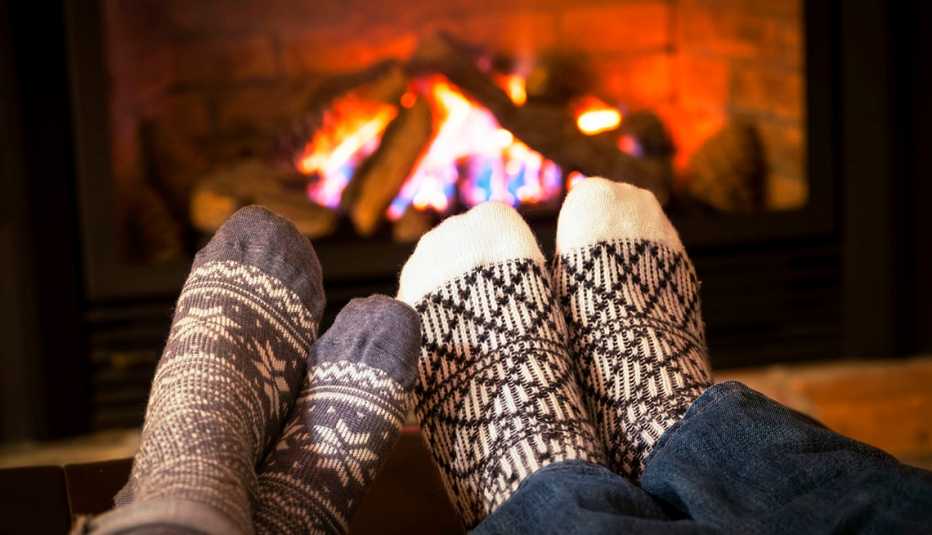AARP Hearing Center
Family get-togethers over rows of favorite dishes. Shopping mall Santas. Charlie Brown and that pitiful tree (still a heart-tugger after all these years). There’s much to love about this time of year, but let’s face it: The holidays can really wreak havoc on our well-being. Stress can lower the immune system, calorie-filled treats can challenge the waistline, and slippery sidewalks can lead to nasty falls. Not to worry: With a little navigation you can slide through the next few weeks unscathed and with holiday spirit intact.
On the Road
If you’ll be heading over the river and through the woods to visit friends or family for the holidays, here are a few tips for a more comfortable — and health-conscious — trip.
Be kind to your bladder. “Holding it in” for long periods can lead to urinary tract infections from bacteria buildup. To map out bathrooms along your route, try an app called Flush, which boasts a database of 190,000-plus bathrooms, including those with disabled access, and directions on how to get there (free on iOS and Android). To safely cut down on how many pit stops you’ll have to make, sip fluids slowly throughout the trip, advises Linda Brubaker, a urogynecologist and clinical professor at the University of California, San Diego. “Unless you’re taking something that changes the color of your urine — some vitamins or bladder pain relievers, for example — you can usually rely on the color of your urine to avoid dehydration,” she notes. “It should be light yellow during the day, though it’s normal to have darker urine first thing in the morning.” Don’t go without drinking, then gulp down a lot at one time, which can be hard on the bladder. Try to sip water and avoid caffeinated beverages as much as possible, since they can stimulate the bladder.
Plan for pit stops. Hours spent in a car can do a number on your circulation, your muscles and your vision, not to mention your psyche. Sitting for too long also puts you at risk for blood clots in your legs, notes Brubaker. So build in breaks to walk, grab a bite to eat, or simply get some fresh air. The rule of thumb: a break of at least 15 minutes for every two hours behind the wheel, and no more than eight hours a day of driving.
Break out the munchies. Of course, you’re going to want something to nibble on during the trip. Nutritionist Carolyn Scott-Hamilton suggests nuts, dehydrated fruits and veggies, low-sugar energy bars, and homemade trail mix for on-the-road snacking. “Their crunchy texture will satisfy your urge to nibble, and since they’re nutrient-dense, they’ll keep you fuller longer,” she notes. Another fave? Protein powder packets like Healthy To Go! Go Greens Powder Drink Mix. “They’re thin little packets of pure powdered veggies that you can slip into your purse. I pour it into fizzy water, so it tastes like soda. It helps keep my immune system in peak form.”
Rest up. Catch plenty of zzz’s the night before your drive. Studies show that cutting your doze time by even a couple of hours can make you more vulnerable to coming down with a cold — not to mention make you less wide-eyed behind the wheel. Experts recommend at least six hours of shut-eye before a long road trip.


At the Hotel
While it can be nice to retreat to a hotel room after lots of family time, staying at one can also present its own challenges. Here’s how to protect yourself from unwanted surprises.
Bring in the backups. Pack a pair of flip-flops to use on the carpet and bathroom floor to prevent fungal infections and, yes, bring along some antibacterial wipes. The most germ-filled places in a hotel room, according to travel pro Peter Greenberg, is the TV remote. Give it a good going-over before handling — and don’t forget the doorknobs, phone receiver, toilet flusher and faucets.







































































